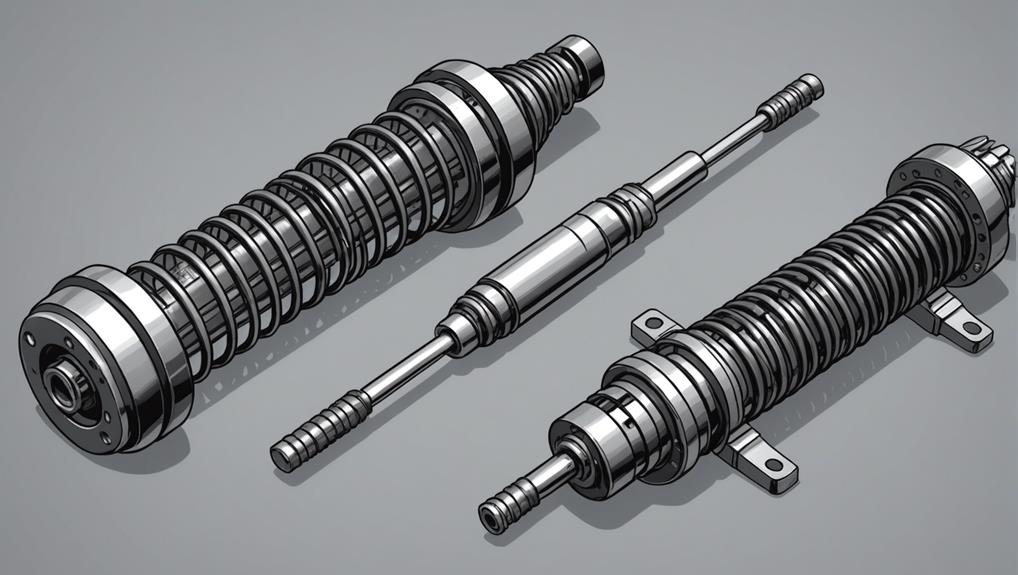As you consider making Chicago your home, it's important to understand the city's diverse cost of living. Housing costs are steep, with a median home price of $291,200 and average 1-bedroom apartment rent of $1,336. Transportation expenses, like a $75 monthly transit pass, add up too. Healthcare, food, and utility bills also contribute to the overall cost. On the bright side, Chicago offers a strong job market and diverse entertainment options. To get a thorough picture of the city's expenses and opportunities, you'll want to explore each of these factors in more detail, which can help you determine whether Chicago is the right fit for you.
Key Takeaways
- The median home cost in Chicago is $291,200, with a housing appreciation rate of 19.66% and average apartment rent of $1,336 for a 1-bedroom.
- Transportation expenses for a single adult average $5,356 annually, with a monthly local transit pass costing $75 and a single L train trip costing $2.50.
- Healthcare costs in Chicago include an average doctor's visit cost of $170, an optometrist visit cost of $109.81, and a Lipitor medication price of $420.30.
- The average monthly grocery cost for a single adult in Chicago is $300, with a sales tax of 10.25% plus a 0.5% restaurant tax, and average utility costs of $214 per month.
- A living wage in Chicago is around $18.72 per hour, with a median household income of $65,781 and diverse job opportunities in various industries.
Housing Costs in Chicago
When searching for a place to call home in Chicago, you'll likely encounter a median home cost of $291,200, with an appreciation rate of 19.66%, making it essential to factor these housing costs into your budget. The city's housing costs have increased noticeably, with apartment rents rising by 51.30%.
Renting isn't cheap either, with a 1-bedroom apartment averaging $1,336 and a 2-bedroom costing around $1,450. To afford a median-priced 1-bedroom apartment, you'll need an annual income of $53,440. If you're considering buying, be prepared for a property tax rate of 2.27%. On a $217,500 home, that's $4,942 in property taxes.
Affordable housing options are limited, and the appreciation rate highlights the urgency to find a place that fits your budget. As you weigh your housing options, keep in mind that Chicago's high housing costs will significantly impact your overall cost of living.
Transportation Expenses

As you navigate the Windy City, your wallet will feel the impact of transportation expenses, which can add up quickly, with the average annual cost for a single adult in Chicago totaling $5,356.
This substantial amount can be broken down into various transportation costs, including public transit, which is a convenient option for many Chicagoans. A monthly local transit pass, for instance, will set you back $75.
If you need to travel from the suburbs to Chicago, Metra Rail is a reliable option. For shorter trips, the L train is a popular choice, with a single one-way trip costing $2.50.
These costs can add up, especially for families: transportation expenses for a family of three in Chicago amount to $11,780 per year.
As a single adult, it's crucial to factor these costs into your budget to make sure you can afford the lifestyle you want in Chicago. By understanding the transportation expenses involved, you can make informed decisions about how to manage your finances and get around the city efficiently.
Healthcare in Chicago

Navigating the healthcare system in Chicago requires understanding the costs associated with medical care and the options available to you. From doctor's visits to prescription medications, having a clear picture of what to expect financially is crucial.
In this section, we'll break down the medical costs and explore the health insurance options that can help you manage these expenses.
Medical Costs Analysis
You'll likely pay around $170.00 for a doctor's visit in Chicago, a cost that's relatively in line with other major cities in the United States. This is just one aspect of medical costs in Chicago, which can add up quickly.
If you need to see an optometrist, you'll pay around $109.81 for a visit. If you're prescribed Lipitor medication, be prepared to pay $420.30. And, a dentist visit will set you back around $122.00.
Fortunately, healthcare services in Chicago are accessible with various providers and clinics. While these costs might seem steep, they're an important part of maintaining your health. It's essential to factor these expenses into your budget to ensure you can afford the care you need.
Health Insurance Options
When it comes to managing healthcare expenses in Chicago, having a suitable health insurance plan can greatly reduce your out-of-pocket costs. You'll find that healthcare services are readily available in Chicago, with numerous providers and clinics scattered throughout the city.
While prescription medication prices in Chicago are comparable to national averages, an affordable health insurance plan can help mitigate these expenses. Fortunately, Chicago offers a range of affordable plans to help you manage your healthcare costs.
Keep in mind that Chicago's average sales tax and dining taxes will also affect your overall cost of living, including healthcare expenses. However, with the right health insurance plan, you can enjoy quality medical services without breaking the bank.
Food and Grocery Prices

As you navigate the cost of living in Chicago, you'll want to take into account the expenses associated with food and groceries.
You'll find that eating out can add up quickly, with a meal at a budget-friendly restaurant costing around $15.
Grocery shopping will set you back around $300 per month for a single adult.
From meal delivery options to grocery store prices, understanding these costs will help you plan your budget effectively.
Eating Out Expenses
Your eating out expenses in Chicago will likely add up quickly, especially with the city's high sales tax and additional restaurant tax. When dining out in Chicago, you'll need to take into account these extra costs when budgeting for food expenses.
Here are some key facts to bear in mind:
- A meal at a budget-friendly restaurant in Chicago averages around $15
- A three-course meal at a mid-range restaurant costs approximately $72
- Chicago has a sales tax of 10.25% with an additional 0.5% restaurant tax
- Dining out expenses vary, so planning ahead is crucial
- You can expect to pay around $15-$30 per meal at a casual restaurant, depending on the location and type of cuisine
Grocery Store Prices
How much are you willing to spend on groceries in Chicago, where a loaf of bread costs $3.79 and a dozen eggs will set you back $4.02?
When it comes to grocery store prices, Chicagoans can expect to pay a premium for their daily essentials. The average cost of a loaf of bread in Chicago is $3.79, while a dozen eggs will cost you around $4.02.
If you're looking to grab a gallon of milk, be prepared to shell out around $3.92.
If you're in the mood for a quick dinner, a 12-inch pizza from Pizza Hut will set you back $4.89. And if you're craving a Quarter-Pounder with cheese from McDonald's, expect to pay around $13.39.
These prices may seem steep, but they're the reality of grocery store prices in Chicago. Understanding the cost of groceries is essential to budgeting your expenses and making the most of your hard-earned cash. By knowing what to expect, you can plan your meals, shop smart, and make the most of your grocery budget.
Meal Delivery Options
You'll find a range of meal delivery options in Chicago, from popular services like Grubhub, Uber Eats, and DoorDash, which can bring everything from local favorites to international dishes right to your doorstep. With the convenience of meal delivery, you can enjoy diverse cuisines without stepping foot outside. But what's the cost of this convenience?
Here are some key things to know about meal delivery in Chicago:
- Average cost of a meal delivery ranges from $10 to $30, depending on the restaurant and distance.
- Grocery delivery services like Instacart and Peapod are convenient options for stocking up on essentials.
- Meal delivery apps offer discounts, promotions, and loyalty programs to make dining in Chicago more affordable.
- You can enjoy local favorites and international dishes, expanding your culinary horizons.
- Meal delivery services operate in various Chicago neighborhoods, making it easy to find options near you.
When considering meal delivery in Chicago, weigh the cost against the convenience and flexibility it offers. With various services and options available, you can find a meal delivery solution that fits your budget and lifestyle.
Utility Bills and Services

As you settle into your 915 sq ft apartment in Chicago, you can expect to pay around $150 per month in average utility costs. This is relatively important, given that Chicago's utility costs are 7% lower than the national average. Your utility bills will cover essential services like electricity, water, gas, and trash removal.
When budgeting for your cost of living in Chicago, it's important to take into account these utility expenses.
In addition to these basic services, you'll also need to factor in internet service, which typically costs around $64 per month in Chicago. This will bring your total utility expenses to around $214 per month.
While this may seem like a significant expense, it's important to remember that these costs are relatively low compared to other major cities. By understanding these average utility costs, you can better plan your Chicago cost of living and guarantee a comfortable lifestyle in this vibrant city.
Entertainment and Leisure

After covering the necessary expenses like utility bills, it's time to focus on the fun stuff – enjoying Chicago's vibrant entertainment and leisure activities, which can quickly add up if not budgeted for. As you explore the city, you'll find a wide range of options to suit your interests and budget.
Here are some costs to take into account:
- A movie ticket averages $18.94, making it essential to budget for entertainment expenses.
- Enjoying a yoga class will set you back around $26.67, adding to your leisure costs in the city.
- Indulging in a 6-pack of Heineken beer will cost you approximately $9.91, a popular choice for social gatherings or relaxation.
- Chicago offers a variety of entertainment options, from theaters to sports events, catering to different interests and budgets.
- With an average of 0.51 bars per 1,000 people, Chicago provides ample options for socializing and unwinding after work or on weekends.
Remember to factor these costs into your budget to take full advantage of Chicago's entertainment and leisure activities without breaking the bank.
Taxes and Insurance

Chicago's taxes and insurance costs can be a substantial burden, with property taxes alone accounting for a significant portion of your expenses. As a homeowner, you'll need to take into account the 2.27% property tax rate, which translates to $4,942 in annual taxes on a $217,500 home.
The effective property tax rate is 2.23%, which impacts homeownership costs in Chicago. Additionally, you'll need to factor in sales tax, which stands at 10.25%, along with a 0.5% restaurant tax. These tax rates contribute greatly to the cost of living in Chicago, making it important to understand them for budgeting and financial planning.
When planning your expenses, remember that property and sales taxes will take a chunk out of your income. It's essential to factor these costs into your financial planning to avoid financial strain.
Job Market and Salary

With a median household income of $65,781, you'll need to earn a decent salary to afford the cost of living in Chicago, especially considering the city's high taxes and insurance costs. To thrive in this vibrant city, you'll want to secure a job that pays a living wage, which is around $18.72 per hour for a single individual.
Chicago's job market attracts newcomers with opportunities in diverse industries like:
- Manufacturing
- Transportation
- IT
- Health services
You'll find major companies like McDonald's, Boeing, United Continental, Mondelez International, and Conagra Brands, offering opportunities for career growth.
As a college student, you can utilize resources like Apartment List to explore the best places to live in Illinois and find apartments that fit your budget.
With a strong job market and opportunities for career advancement, Chicago is an attractive destination for those seeking a thriving career.
Additional Expenses to Consider

You'll need to factor in several additional expenses when budgeting for life in Chicago, including healthcare costs, transportation fees, and miscellaneous goods.
These expenses can add up quickly, so it's crucial to take them into account when planning your financial strategy for Chicago living. When it comes to healthcare costs, don't forget to factor in expenses like doctor's visits, prescription medications, and dental care. These costs can be significant, especially if you have ongoing health issues or require regular check-ups.
Moreover, you'll need to budget for transportation fees, including gas prices, public transit fees, and potential car maintenance. These expenses can vary depending on your lifestyle and transportation choices.
Additionally, you'll need to account for miscellaneous goods like groceries, clothing, and personal care items. These expenses might seem minor, but they can impact your overall cost of living in Chicago.
Frequently Asked Questions
What Is the Salary to Afford Living in Chicago?
To afford living in Chicago, you'll need an annual income of at least $53,440 for a median-priced 1-bedroom apartment, but ideally, you should earn around $65,781, the city's median household income, to live comfortably.
Is $75,000 Enough to Live in Chicago?
Like a puzzle piece fitting snugly into place, your $75,000 income in Chicago clicks into a comfortable living situation, allowing you to afford a 1-bedroom apartment, transportation, and more, with smart budgeting and cost-saving strategies.
Is $90,000 a Good Salary in Chicago?
You're earning $90,000 in Chicago – that's a great salary! You'll comfortably afford a median-priced 1-bedroom apartment, enjoy dining out, and still save for the future, making it a very good salary in the city.
Is 60K a Good Salary in Chicago for a Single Person?
You're exploring the Chicago streets with a $60,000 salary, and it's like having a roadmap to a comfortable lifestyle. You can afford a decent apartment, public transportation, and enjoy the city's perks, as long as you budget wisely.
Conclusion
As you weigh the pros and cons of calling Chicago home, keep in mind that the Windy City's costs add up quickly. From housing to healthcare, every expense counts.
While the city's vibrant culture and opportunities are enticing, it's essential to take into account the financial realities. So, can you afford to live in Chicago? The answer lies in your own budget and priorities.
As the city's motto goes, 'Urbs in Horto' – a city in a garden – but only if you're willing to tend to your finances carefully.










